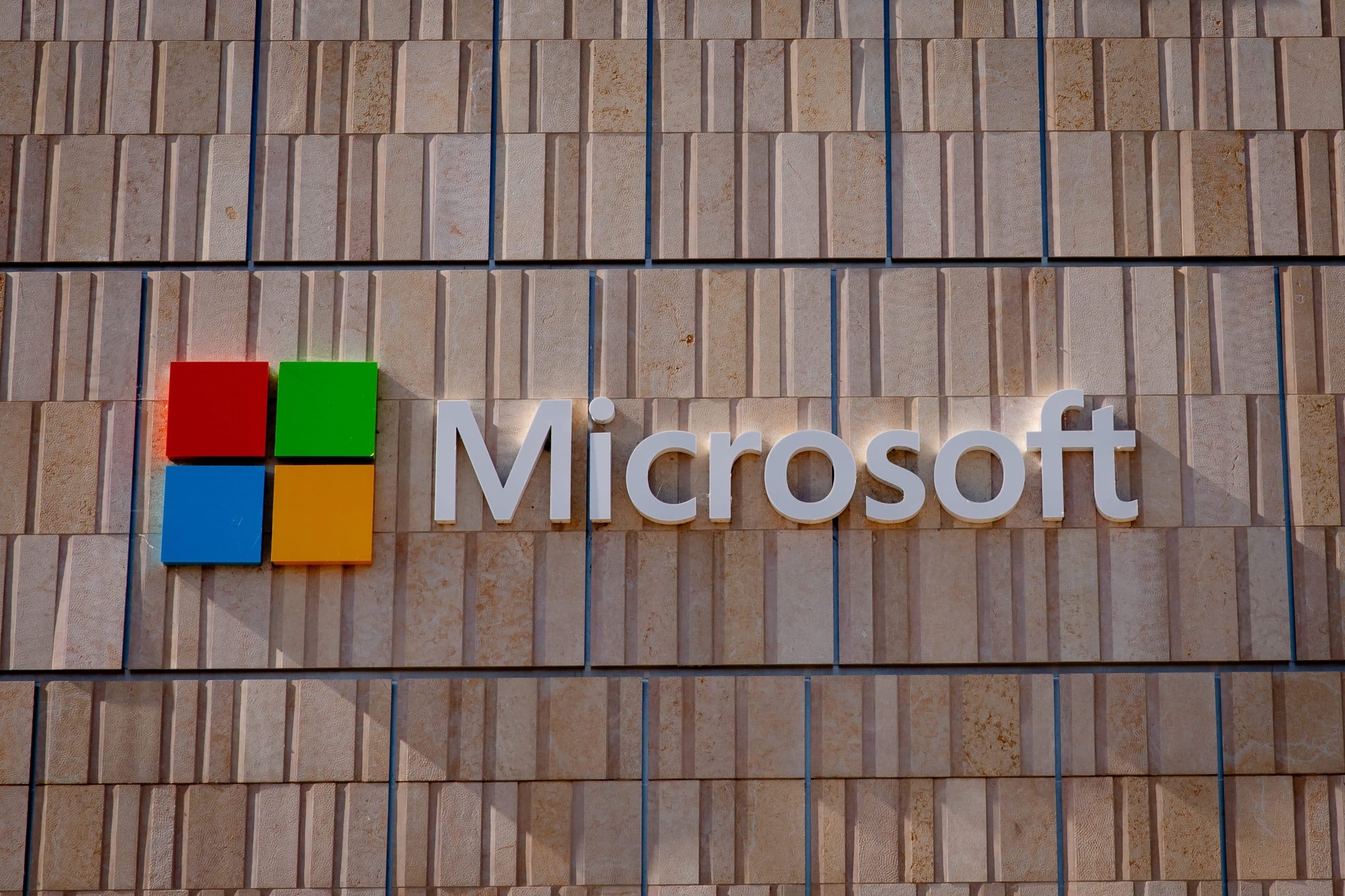Over the past five years, Microsoft Corporation has delivered one of the most impressive profit growth trajectories in the global technology sector. The company’s diluted earnings per share (EPS) have soared from $5.76 to $13.64, representing a cumulative gain of 136.81% and a striking compound annual growth rate (CAGR) of 18.81%. This exceptional performance reflects not only Microsoft’s dominance in enterprise software and cloud computing but also its ability to adapt, innovate, and monetize at scale during one of the most dynamic periods in technology history. The rapid and sustained growth in net EPS provides a window into both Microsoft’s internal operational strength and the macro trends shaping the digital economy.
Quantitative Analysis: From $5.76 to $13.64 — The Power of Compounding
Examining the EPS trajectory from mid-2020 to 2025, the steepness of Microsoft’s earnings curve is unmistakable. In just five years, the company nearly doubled its profitability per share, with only brief periods of plateauing or minor retracement. The trendline is marked by consistent quarter-over-quarter increases, especially after 2021, underscoring the effectiveness of Microsoft’s recurring revenue business model and its success in converting topline growth into bottom-line results. The CAGR of 18.81% over five years places Microsoft among the top performers not only in Big Tech but across the entire S&P 500.
What makes this compounding especially impressive is the scale at which it has occurred. Microsoft, already one of the world’s largest companies by market capitalization, has proven it can sustain double-digit EPS growth even at a mature stage. This reflects a rare combination of pricing power, operating leverage, and disciplined capital allocation.
Cloud, Productivity, and Platform: The Three Pillars Behind the Growth
The surge in EPS is anchored in three strategic pillars. First is the explosive expansion of Microsoft Azure, the company’s cloud computing arm. Azure has consistently gained market share against Amazon Web Services and Google Cloud, benefiting from hybrid and multi-cloud adoption trends among large enterprises. The rise of AI, accelerated computing, and cloud-based application development has provided a secular tailwind, enabling Azure to grow revenues at a rapid clip and contribute high-margin profits to the corporate bottom line.
Second, Microsoft’s Productivity and Business Processes segment — which includes Office 365, LinkedIn, and Dynamics — has evolved into a robust, subscription-driven cash engine. The transition to cloud-based licensing and the upselling of advanced analytics, collaboration, and security features has increased customer stickiness and average revenue per user. The integration of AI into Office and Teams has further differentiated Microsoft from its competitors and added monetization layers that drive EPS expansion.
Third, Microsoft’s More Personal Computing division, encompassing Windows, Surface, and Xbox, has provided balance and diversification. While growth in PC shipments has been cyclical, Microsoft’s ability to monetize installed base through Windows subscriptions, cloud gaming, and device ecosystems has stabilized revenues and provided incremental EPS contribution.
Capital Allocation, Share Buybacks, and Dividend Policy
A significant factor amplifying Microsoft’s EPS growth has been its disciplined capital allocation. The company has consistently repurchased shares, taking advantage of cash flows generated from operations. By reducing share count, Microsoft has magnified the impact of rising net income on EPS, benefiting long-term investors. Additionally, Microsoft’s dividend policy has remained robust, with regular increases that attract both growth and income-focused shareholders.
The combination of organic growth, buybacks, and dividends has created a compounding machine that accelerates shareholder returns. Even in periods when topline revenue growth has slowed, the efficiency gains and capital return strategy have ensured that EPS remains on an upward trajectory.
The AI Revolution: Microsoft’s Partnership with OpenAI and Copilot
The last two years have seen Microsoft emerge as a central player in the artificial intelligence boom. The company’s multi-billion-dollar investment in OpenAI and the rapid integration of generative AI technologies into Azure, Office, and Dynamics have created new growth vectors. Microsoft Copilot, the AI-powered assistant embedded across the company’s productivity suite, has generated significant interest from enterprises and driven additional revenue per seat.
AI is not only a product feature but a platform play for Microsoft. As organizations across industries race to adopt AI for automation, decision support, and customer engagement, Azure’s positioning as an AI-optimized cloud has proven a competitive advantage. This is reflected in the acceleration of EPS growth in 2023–2025, when AI-related monetization began to move the needle materially for Microsoft’s financial results.
Competitive Landscape and Resilience Amid Macroeconomic Headwinds
Despite growing competition from Amazon, Google, Salesforce, and new AI-native entrants, Microsoft has managed to defend and expand its profit pool. The company’s diversified business model, global reach, and deep integration across enterprise IT environments have provided resilience during periods of market volatility, inflation, and geopolitical uncertainty.
Moreover, Microsoft’s prudent expense management and focus on high-value, mission-critical workloads have allowed it to sustain margins even as it invests heavily in growth. The consistency of EPS increases over 20 consecutive quarters is a testament to management’s ability to balance innovation with financial discipline.
Strategic Risks and Forward Outlook
While Microsoft’s recent performance is extraordinary, investors must consider forward risks. The pace of AI adoption, the potential for margin compression as competition intensifies, and regulatory pressures in the U.S. and EU could all impact future profitability. Additionally, as Microsoft’s revenue base grows, sustaining a near-19% CAGR in EPS will become more challenging.
Nevertheless, Microsoft’s multi-year cloud contracts, deep enterprise relationships, and ongoing innovation pipeline position it to remain a leader in global technology. The company’s approach to balancing growth and capital return is likely to keep EPS on an upward path, albeit with potential for increased volatility as market dynamics shift.
Conclusion: Microsoft as a Case Study in Tech Sector Compounding
The last five years of Microsoft’s EPS growth highlight what is possible when a mature company leverages innovation, operational excellence, and disciplined capital allocation. The journey from $5.76 to $13.64 in diluted EPS demonstrates the power of compounding at scale and the strategic advantage of recurring revenue models. For investors, Microsoft stands as a benchmark for profitable growth in the age of AI and cloud computing.
Comparison, examination, and analysis between investment houses
Leave your details, and an expert from our team will get back to you as soon as possible
* This article, in whole or in part, does not contain any promise of investment returns, nor does it constitute professional advice to make investments in any particular field.
To read more about the full disclaimer, click here- orshu
- •
- 8 Min Read
- •
- ago 2 hours
 The Rise of the Crypto World: A Technological Revolution That Changed the Face of Global Finance
The Rise of the Crypto World: A Technological Revolution That Changed the Face of Global Finance
The world of cryptocurrencies, once considered a niche and esoteric field a decade ago, has rapidly become one of the
- ago 2 hours
- •
- 8 Min Read
The world of cryptocurrencies, once considered a niche and esoteric field a decade ago, has rapidly become one of the
- orshu
- •
- 7 Min Read
- •
- ago 4 hours
 European Markets Close Strong: DAX and FTSE 100 Lead the Way
European Markets Close Strong: DAX and FTSE 100 Lead the Way
As the trading day in Europe draws to a close, a sense of cautious optimism prevails. Despite some mixed performance,
- ago 4 hours
- •
- 7 Min Read
As the trading day in Europe draws to a close, a sense of cautious optimism prevails. Despite some mixed performance,
- orshu
- •
- 9 Min Read
- •
- ago 4 hours
 Lemonade Publishes Q2 2025 Financial Results: Profitability, Innovation, and Risk Management at the Core of its Strategy
Lemonade Publishes Q2 2025 Financial Results: Profitability, Innovation, and Risk Management at the Core of its Strategy
Lemonade, Inc. (NYSE: LMND), the insurance technology company that combines artificial intelligence (AI) with innovative models, has published its financial
- ago 4 hours
- •
- 9 Min Read
Lemonade, Inc. (NYSE: LMND), the insurance technology company that combines artificial intelligence (AI) with innovative models, has published its financial
- orshu
- •
- 8 Min Read
- •
- ago 5 hours
 MercadoLibre Stock Falls After Q2 Earnings Miss Estimates Despite Strong Sales
MercadoLibre Stock Falls After Q2 Earnings Miss Estimates Despite Strong Sales
MercadoLibre (MELI) stock fell more than 5% in after-hours trading on Monday after the Latin American e-commerce company reported mixed second-quarter results,
- ago 5 hours
- •
- 8 Min Read
MercadoLibre (MELI) stock fell more than 5% in after-hours trading on Monday after the Latin American e-commerce company reported mixed second-quarter results,












